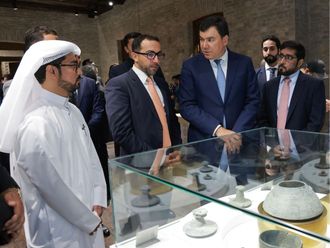Al Ain: The camel, the ship of the desert, has a long history. It is believed that camels were first domesticated somewhere between 3,000BC in the Arabian Peninsula and in 2,500BC in Bactria — an ancient state that once thrived in present-day northern Afghanistan.
There are four different species of camels called llama, alpaca (both tame), guanaco and vicuna (both wild). Bactrian camels have two humps and the Arabian camel, which is also called a dromedary, can easily be distinguished because it has one hump.
Camels were a vital source of milk for human survival in countries located in arid zones — like much of the Arab world. The population of the Bactrian camel is on the decline. Some wild Bactrian camels are found in the Gobi Desert in China and Mongolia and they have been listed as being an endangered species.
Around 70 per cent of the world’s camels live in Somalia and Sudan, mostly one-humped, It is believed that Al Ain has the largest camel population in the UAE.
Australia has the largest wild (feral) camel population of around 700,000. They are, however, being culled by the Australian government as they are viewed as an environmental threat.
Camels live in herds and their average life expectancy is between 40 to 50 years. A female camel is sexually mature at the age of four to five years and it also starts producing milk at this age.












